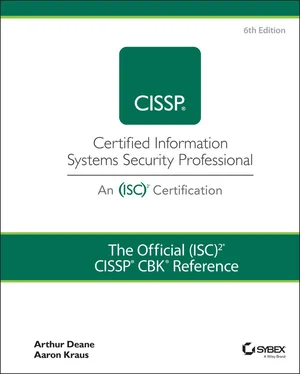1 ...6 7 8 10 11 12 ...35 A business strategy describes the actions that a company takes to achieve its goals and objectives. Whereas a mission statement describes what will be achieved, an organization's business strategy identifies exactly how the mission will be accomplished. A company's mission statement rarely changes, but an organization's strategy must be flexible enough to change as the business environment changes.
A goal , in business, is something that an organization expects to achieve or accomplish. Business goals help a company plan for success, and an organization's goals should contribute to its mission. Many companies use the SMART criteria to define their organizational goals. SMART is a mnemonic acronym that defines criteria for creating quality goals. A SMART goal must exhibit the following characteristics:
Specific: State what you will do using real numbers and real deadlines.
Measurable: Identify a way to evaluate progress and measure success (or failure). Use metrics or data targets to ensure that the goal is trackable.
Achievable or Attainable: Establish challenging, but possible, goals that are within your scope.
Relevant: Establish a goal that is pertinent to your overall mission and vision and aligned with your organization's values and strategy.
Time-bound: State when you will get the goal done, using specific dates or timeframes.
An objective is a milestone or a specific step that contributes to an organization reaching its goals and achieving its mission. Objectives are used to define incremental steps toward achieving a broader goal. Much like SMART goals, organizations often use the SMART framework to define quality objectives. While many people incorrectly use the terms goal and objective interchangeably, you should understand that an objective is a short-term milestone that supports a longer-term goal.
When establishing your organization's security function, you should begin by defining a security strategy that aligns with your organization's overall business strategy and mission statement. You should develop a set of specific, measurable, achievable, relevant, and time-bound goals and objectives that will help you efficiently maintain the confidentiality, integrity, and availability of your company's systems and information without disrupting your organization's ability to achieve its business goals and objectives. Running an effective security program demands careful consideration of business needs and organizational strategy, in addition to legal and compliance requirements, and requires governance to manage the effectiveness of the security function within the overall organization.
People who consider information security a purely IT matter are more prone to focusing solely on the technologies that fit into a security program. As a CISSP, you should know that a mature information security program is more than a collection of firewalls, intrusion detection systems and intrusion prevention systems (IDSs/IPS), and other tools thrown together — a well-managed security program requires processes in place to provide oversight of activities by executive members of the organization. Security governance is the set of all organizational processes involved in defining and managing information security policies and procedures, including the oversight to ensure that those policies and procedures follow the direction of the organization's strategy and mission.
A governance committee is a group of executives and leaders who regularly meet to set the direction of the company's security function and provide guidance to help the security function align with the company's overall mission and business strategy. Governance committees review ongoing and planned projects, operational metrics, and any other security matters that may concern the business as a whole. The primary objective of a governance committee is to provide oversight for the company's security function, while ensuring that the security function continues to meet the needs of the organization and its stakeholders.
There are many organizational processes that require a heavy dose of security governance. Mergers, acquisitions, and divestitures are major business events that come with a great deal of security risk that a company must manage.
A merger is the combining of two separate organizations that creates a new, joint organization. An acquisition is the takeover of one organization by another. While mergers and acquisitions (M&A) have different business approaches, they share many of the same security concerns and are often discussed together.
There are countless potential security risks when a company acquires another company or when two organizations decide to merge. For any merger or acquisition, it's imperative that organizations consider these risks and identify appropriate mitigations before pulling the trigger. Some M&A risk factors to consider include the following:
Absorbing the unknown: When merging with or acquiring another organization, you are absorbing its entire IT infrastructure — good or bad. This means that you are acquiring systems that are likely managed differently from your own, and there may be significant differences in the security controls and processes in place. In addition, the acquired company may use homegrown or highly customized applications that will need to be securely integrated into your existing environment. Further, the acquired or absorbed company may use a different approach to threat modeling and vulnerability management (if they do these at all). Differences in security processes may result in operational challenges and inconsistent procedures during and after integration of the two businesses.
Creating new attack vectors: By adding in new systems and platforms, you are potentially creating new routes for your company to be attacked. For example, if your organization uses Windows and macOS and you acquire a company that has a fleet of Linux systems, you now have a third operating system to manage and secure.
Impacting resources: Mergers and acquisitions are challenging for everyone involved. Your IT teams may be stretched thin as they try to come up to speed on the newly acquired infrastructure while also keeping the existing systems running securely.
Disgruntled employees: In addition to the burnout that employees may feel, corporate M&A can cause severe dissatisfaction in employees who were completely happy in their previously standalone company. Insider threat is commonly considered a top security concern, and acquiring disgruntled employees poses a severe threat to an organization.
A company's security function should play a key role during any M&A conversations and should help identify potential issues related to the target organization's security posture, operations, or policy. If the two organizations have greatly different security postures, it's usually best to reconsider the deal or, at the least, consider fixing key security gaps before connecting the two company's networks and systems. Considering the risks from the previous list, an acquiring company (or both companies in a merger) should perform the following activities prior to completing an M&A deal:
Review the company's information security policies and procedures to determine how thorough they are. Take note of any missing security policies/procedures that may indicate a low level of security maturity.
Review the company's data assets and determine any applicable regulatory or compliance requirements (e.g., PCI, HIPAA, GDPR, etc.). Take particular note of any regulations that may present new requirements for your organization.
Читать дальше












